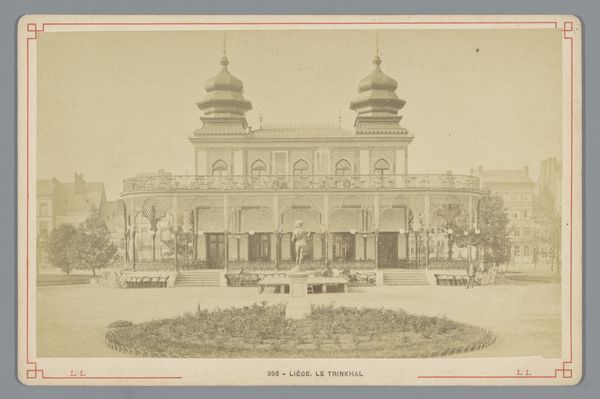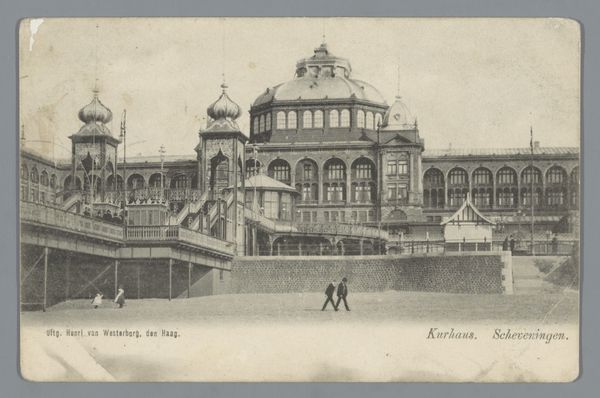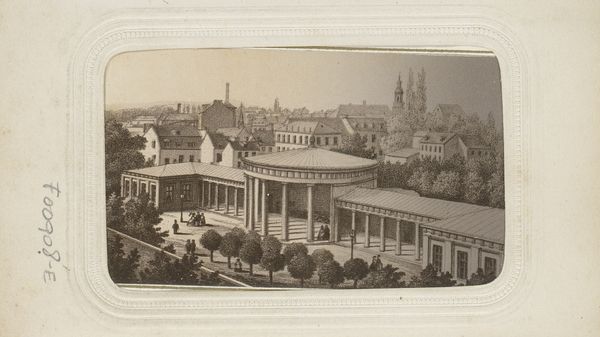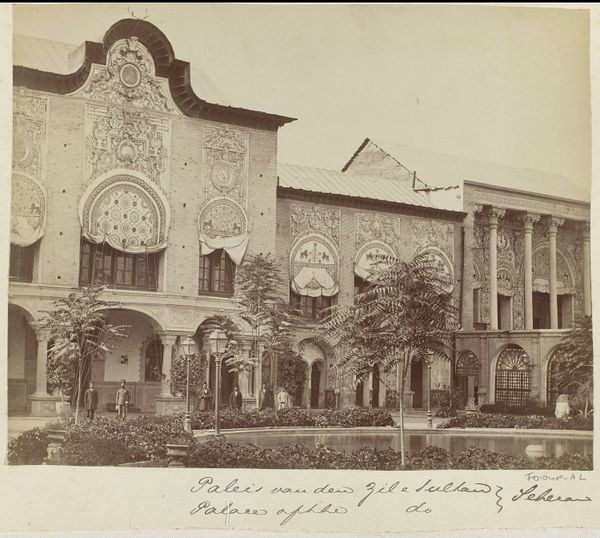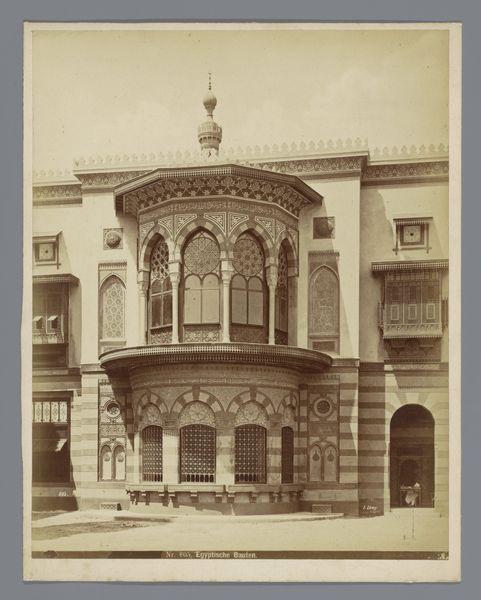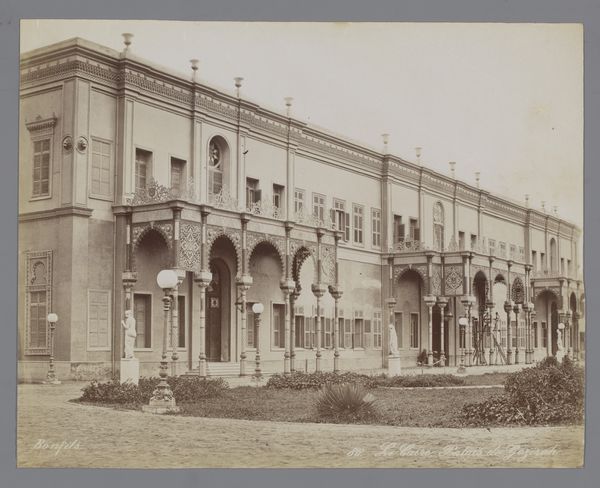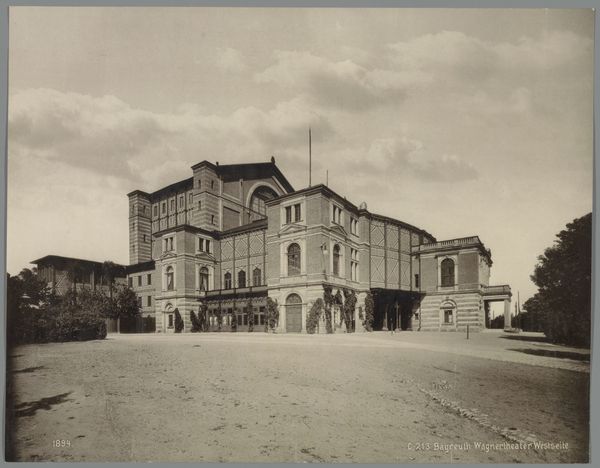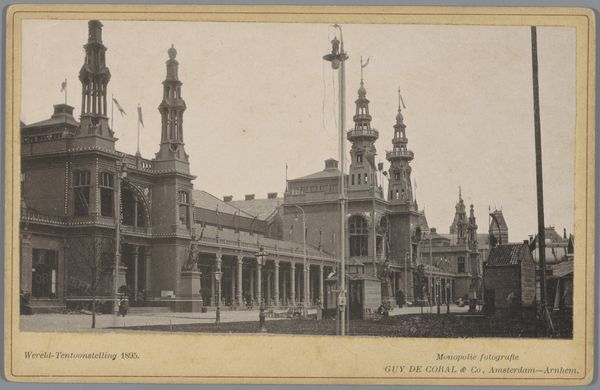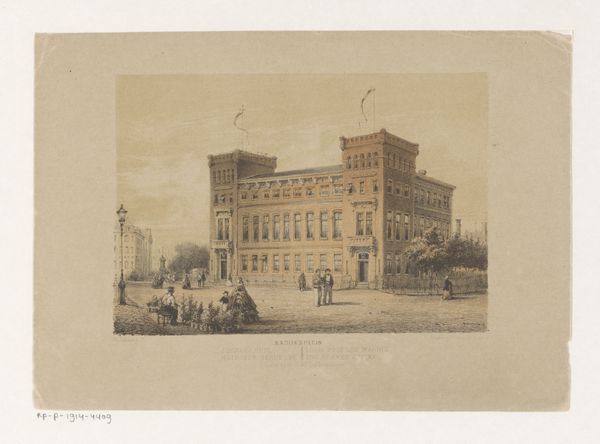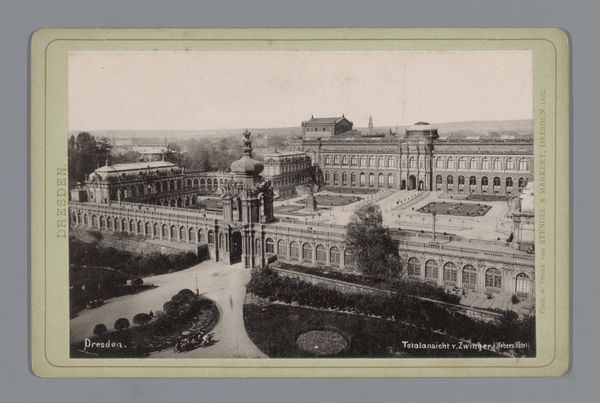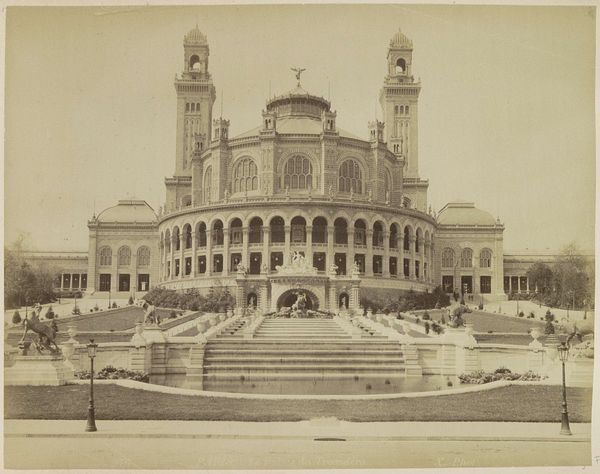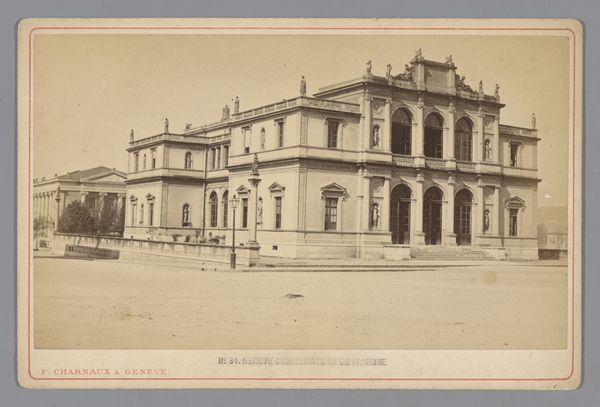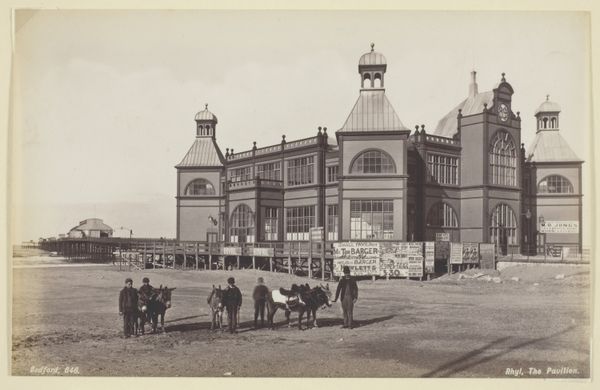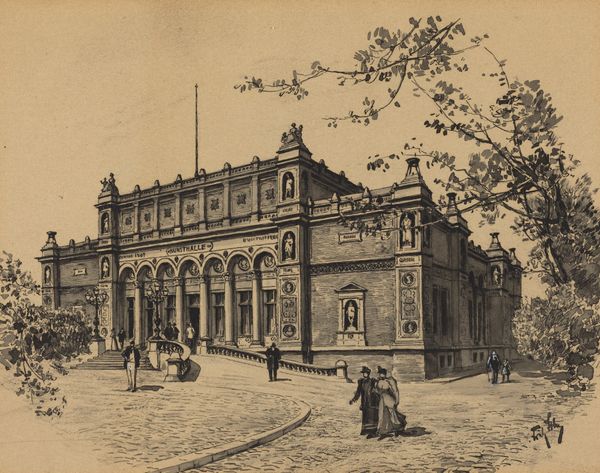
Dimensions: height 89 mm, width 138 mm
Copyright: Rijks Museum: Open Domain
Editor: This is a fascinating print titled "Paris. - Le Trocadero" created in 1913 by Léon & Lévy. I’m immediately struck by the way the Trocadero seems to loom, almost as if it's observing the viewer. What symbolic meanings do you think are embedded within its architectural presentation? Curator: The Trocadero, as depicted here, presents itself as more than just a building. Its Orientalist architectural details – the twin minaret-like towers, the grand dome – speak to France’s colonial ambitions and the exoticism that captivated European audiences at the time. Editor: That's interesting. I hadn't considered the colonial aspect explicitly, but the "exoticism" definitely registered. The way it's positioned feels celebratory and grandiose. Curator: Precisely. Consider the central dome topped with a statue of an eagle – a Roman symbol, itself a nod to power, empire, and foresight. It dominates the Parisian skyline in the image, asserting French dominance, echoing historical and political authority through symbolic forms. But is this entirely triumphant, or does it betray something else? What emotional register do you sense, perhaps beneath the official 'statement?' Editor: Hmm, I hadn’t considered that. There is a sort of… theatricality about it, maybe hinting at underlying vulnerability or even performativity. It makes me wonder if the symbolism of the eagle or the minarets, may lose their potency over time, even though architecture is permanent. Curator: Yes, exactly. Cultural symbols aren't static. Their emotional and psychological impacts change alongside shifting historical narratives. Think of how people interpret this today. Might some view it as an emblem of past imperialistic eras? Editor: Definitely, and it would influence the viewer's interpretation based on shifting societal values, perhaps moving away from pure celebration. Thanks for clarifying the historical contexts influencing how buildings speak to its spectators. Curator: My pleasure. Hopefully, through the lens of iconographic meaning and context, we understand how images and structures echo the cultural and psychological layers.
Comments
No comments
Be the first to comment and join the conversation on the ultimate creative platform.
